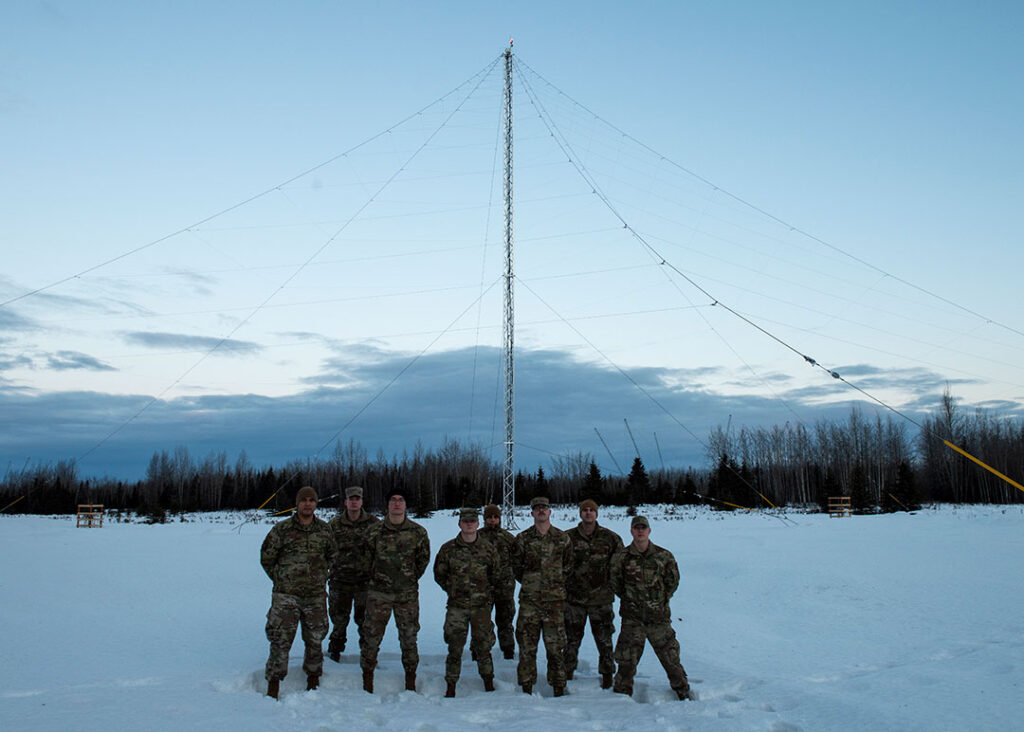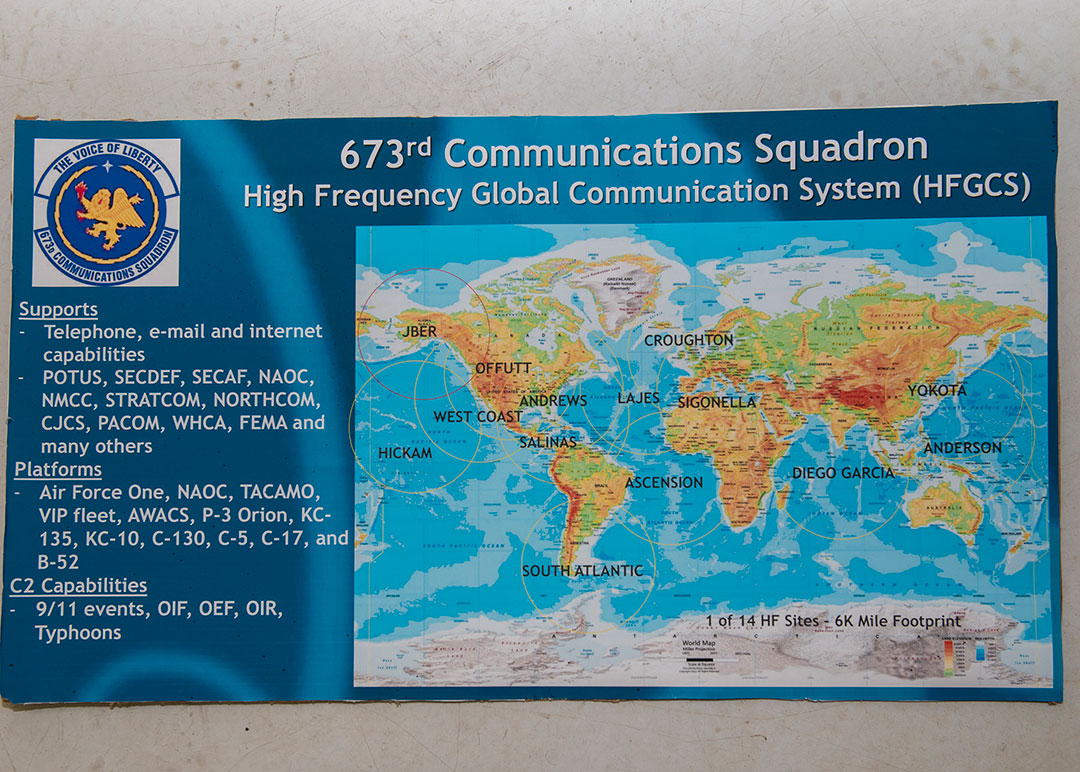THE WATCH STAFF
The U.S. Air Force recently upgraded a key link in its High Frequency Global Communications System (HFGCS).
U.S. Airmen with the 673rd Communications Squadron (CS) were essential to the installation of a 120-foot-tall antenna at Joint Base Elmendorf-Richardson (JBER) in Alaska, according to a January 24, 2022, news release from the base’s public affairs office. The work is scheduled to be completed later this year.
(Airmen of the 673rd Communications Squadron pose in front of the High Frequency Global Communications System antenna at Joint Base Elmendorf-Richardson, Alaska.)
The antenna is one of 13 HFGCS stations strategically located around the globe. The network, pictured, facilitates communications between military ground stations and in-flight aircraft as well as warships and submarines at sea.
“My Airmen take great pride in maintaining JBER’s HFGCS and ensuring the system stays online to secure our national defense,” said Master Sgt. Brandon Schwing of the 673rd CS, according to the news release.
In addition to supporting the air wings and units at JBER, the 673rd CS serves the 11th Air Force, Alaskan Command and U.S. Army Alaska across the Alaskan region of the North American Aerospace Defense Command.
For example, during Exercise Polar Quake held January 10-14, 2022, the 673rd provided support to Tactical Air Control Party (TACP) specialists who conducted command-and-control operations from remote locations, including one at Point Barrow, Alaska, the northernmost point in the United States, according to a January 27 news release. The Agile Combat Employment exercise tested Airmen’s ability to operate in extreme environments.
“You see reflected in this exercise [Polar Quake] the way the military is seeking to counter modern warfare tools from numerous domains, including electronic-warfare tactics, which Russia frequently tests in the Arctic, as well as a large increase in the use of sensors to gain all-domain awareness,” Marisol Maddox, an analyst with the Polar Institute at the Woodrow Wilson Center think tank, told Business Insider in a February 8 story.
The Air Force has the military’s largest Arctic presence, overseeing nearly 80% of Pentagon resources in the Arctic, and is expanding there as the U.S. military refocuses on the region, according to Business Insider.
The HFGCS station at JBER is crucial to that expanding mission. It has a range that extends across the Bering Sea and fosters communications with U.S. aircrews who intercept Russian planes and escort them from U.S. airspace, according to the JBER news release. A 2018 inspection found damage to the HFGCS antenna.
“The damage is believed to be from Alaska’s frequent earthquakes which, over time, caused the soil to move around and settle,” Schwing said.
Contractors built the tower, but the 673d CS’s Radio Frequency Transmission Systems and Antenna Maintenance Airmen were essential to the yearslong project, the JBER news release said.
“The Airmen have gone above and beyond to make sure the HFGCS antenna installation progressed unhindered,” Schwing said, according to the news release. “They gladly provided their technical expertise, support and assistance throughout every phase of this multiyear project. Without them, the installation would not have happened.”
Airmen had to take the antenna offline before work could begin.
“Fortunately, the new antenna was put on the same antenna ports on the matrix as the old antenna,” said Air Force Staff Sgt. James Angell, a 673d CS radio frequency transmission systems supervisor. “The system isn’t going to know the difference, so we aren’t going to have to reprogram it.”
Angell said that in addition to allowing secure communications for Russian intercepts, the HFGCS provides communication support for NASA, Air Force One and Mystic Star — an HF communications system for the president, vice president and other officials aboard aircraft, according to the JBER news release.
“It’s humbling,” Angell said in the news release, “but also gives me a sense of pride to know that we’re part of that mission.”
IMAGE CREDITS: SENIOR AIRMAN SAMUEL COLVIN/U.S. AIR FORCE


